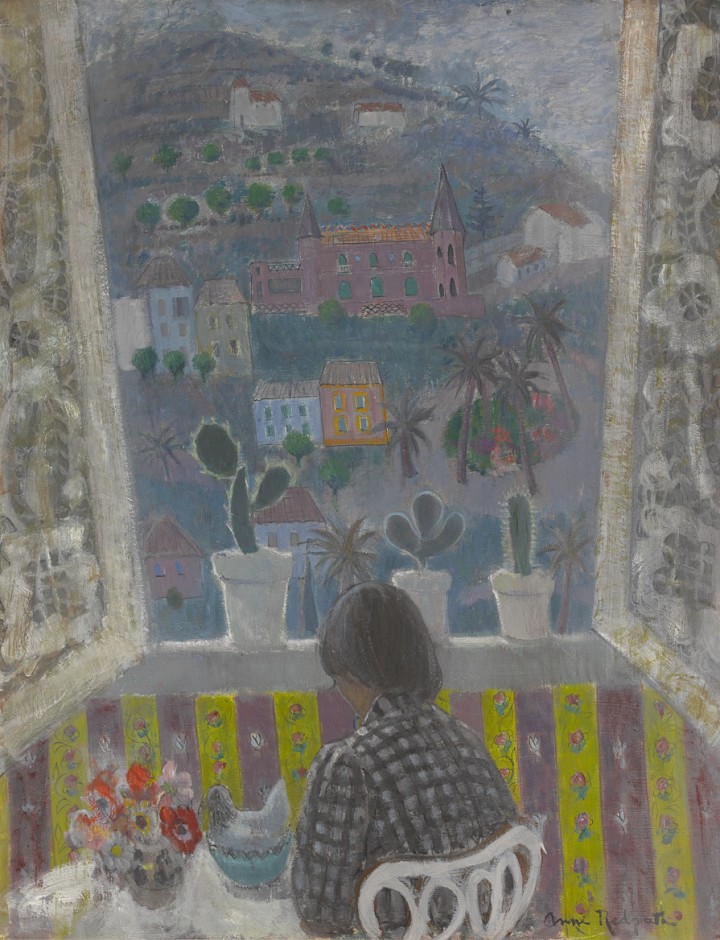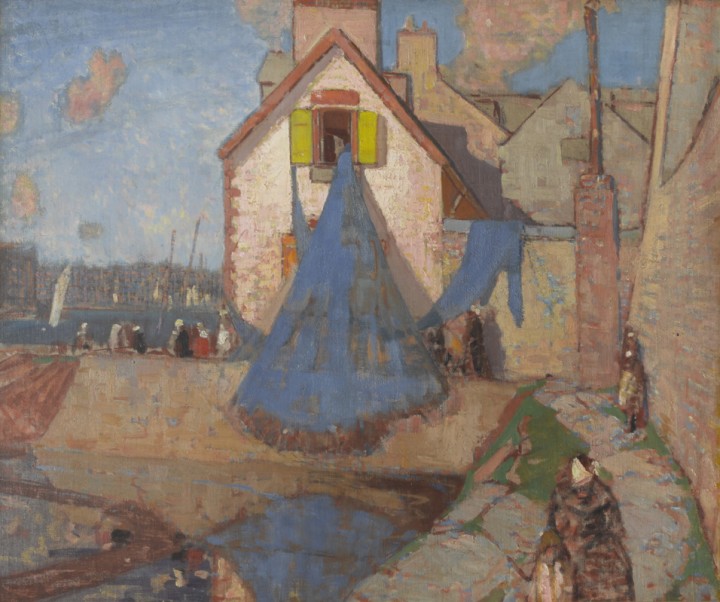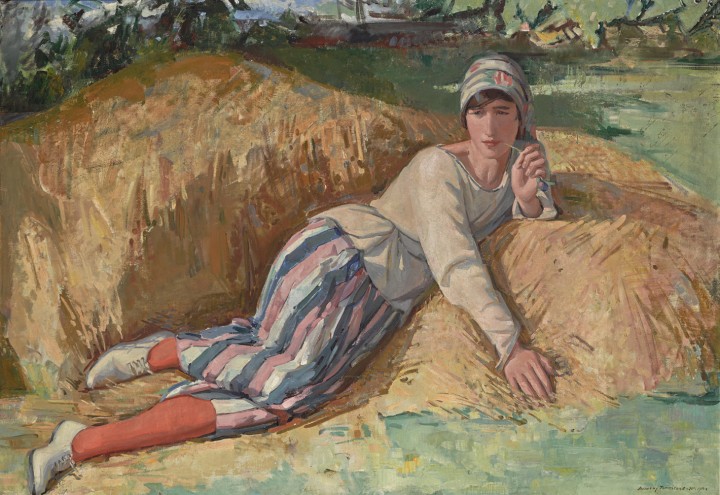Scottish Art News
Latest news
Magazine
News & Press
Publications
Colour and Light: the Art and Influence of the Scottish Colourists
By James Knox, 01.09.2019

An abiding characteristic of Scottish painting in the 20th century has been an obsession with colour. Its source is well known – the 1905 exhibition of the wild beasts of the French avant-garde. Known as 'Les Fauves' and led by Matisse, Derain and Van Dongen, they had an immediate and volcanic impact upon the art of S. J. Peploe and J. D. Fergusson, which was later absorbed by Leslie Hunter and F. C. B. Cadell. But how was the Colourist quartet’s compulsion to explore the extreme effects of colour passed on to the next generation of Scottish artists? Colour and Light: The Art and Influence of the Scottish Colourists – the exhibition which has just opened at Abbot Hall Art Gallery in Cumbria – examines their impact on future generations, arguably for the first time in a museum show.
Their immediate beneficiaries were a group of artists now known as the Edinburgh School, all of whom attended Edinburgh School of Art from just prior to WWI to the early 1920s, depending on their age and war service. They number: David Macbeth Sutherland (1883–1973), Dorothy Johnstone (1892–1980), William Crozier (1893–1930), Anne Redpath (1895–1965), William Gillies (1898–1973), William MacTaggart (1903–1981) and John Maxwell (1905–1962). Most of them also went on to teach at Edinburgh College of Art, which meant that Sutherland, who had visited Paris before the war, taught the 1920s intake of MacTaggart, Maxwell and Gillies. ‘There was something about him,’ recalled Gillies, ‘and his brilliant handling of colour. He was a tremendous stimulus to us all.’
 David Sutherland, Drying the Nets, Concarneau, c. 1924. The Fleming Collection.
David Sutherland, Drying the Nets, Concarneau, c. 1924. The Fleming Collection.
But the closest link to the Colourists was Peploe himself who joined the staff of the ECA – if on a hands-off basis – in 1933. The future arts administrator, Sir Norman Reid, recalled that: ‘Peploe père looked in...’ One of the marked shifts between the careers of the four Colourists – who were never well-off and had to survive through selling their work – and the post-war generation was that the latter could be cushioned by teaching posts, although Anne Redpath – perennially short of money – never succumbed.
Peploe and Cadell were the two Scottish Colourists resident in Edinburgh after the war and they kept a sharp eye on the rising generation. As members of the exclusive artists’ group, the Society of Eight, which could only be topped up by a death or resignation, they backed the election of MacTaggart at the tender age of 24 and later Gillies, aged 33. When Cadell was asked why such an artist should be elected, he replied: ‘Seven of us thought he was the right man.’
Dorothy Johnson is another member of the group who moved in Peploe’s circles, especially during WWI and the early 1920s when both artists spent time in the artists’ town of Kirkcudbright. Her effervescent portrait of Cecile Walton as well as her townscapes of the period reflect Peploe’s vision.
 Dorothy Johnstone, Cecile Walton, 1918. The Fleming Collection.
Dorothy Johnstone, Cecile Walton, 1918. The Fleming Collection.
Apart from personal contact, there were other ties which bound the generations. On their own initiative and without bursaries to support them, the four Colourists had carved out their early careers as consciously European artists – living, training and working in France – and, in Cadell’s case, Germany too. Post-war, all four Colourists had sought inspiration in the south of France, joining the cosmopolitan artist colonies around Cassis and Antibes. As critic and art historian Duncan Macmillan has pointed out: ‘Thanks to the Colourists and Glasgow Boys, there was a sense in which maintaining links with France was seen as a part of the Scottish tradition.’
The next generation was quick to follow in their footsteps. By 1925, Redpath was living in nearby St-Jean-Cap-Ferrat working alongside Crozier (who was based in Italy) and MacTaggart on their frequent visits. Crozier’s 1930 work, The Slopes of Fiesole, signals his debt to the Colourists.
The Colourists’ life-long exploration of still life as a subject worthy of contemporary painting also left its mark. ‘There is so much,’ wrote Peploe, ‘in mere objects, flowers, leaves and jugs – colours, forms, relations – I can never see mystery coming to an end.’ The still-lifes of Gillies, Redpath and Maxwell – although they sing with the authentic voice of their individual creators – are testament to Peploe’s belief.
Redpath succinctly summed up the inheritance of the fauves and their Scottish peers. The paintings of Matisse and those of his school, she wrote, ‘were orchestrations in high-pitched intense colour, pink and orange, violet, yellow and silver green, colour that seemed almost brutal after the gentle harmonies of the impressionist.’ Like all artists equipped with acute intelligence, curiosity and sensitivity, Redpath and her fellow members of the Edinburgh School – not to mention upcoming youngsters such as Elizabeth Blackadder (born 1931) – followed their own destinies as artists, open to any number of influences. But as Duncan Macmillan points out, ‘when looking at this generation, it is important to remember the role of Colourists as intermediaries.’ It was they who set the next generation on their path to glory.
Colour and Light: The Art and Influence of the Scottish Colourists. Until 1 February 2020. Abbot Hall Art Gallery, Kendal, Cumbria LA9 5AL T: (0)1539 722464 | abbothall.org.uk.




